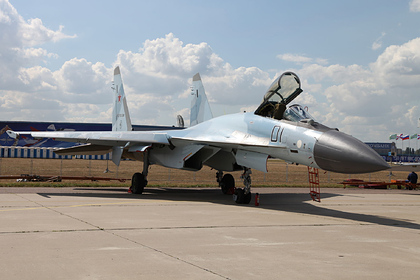The United States evaluated the armament of the multi-purpose Russian Su-35S aircraft and called it the best aircraft for gaining air superiority. The advantages of the aircraft are a large bomb load and a wide range of weapons, according to the author of The National Interest.
The publication notes that the Su-35S (according to the NATO codification: Flanker-E+) received the same engines as the first serial Su-57. The AL-41F-1 engine with a deflected thrust vector made it possible to change the Su-27 airframe, which formed the basis of the Su-35S. The aircraft lost its front horizontal tail, and the controlled thrust vector gives the aircraft super maneuverability.
The Su-35S received a glass cabin with a new avionics, writes the author of the material Mark Episkopos (Mark Episkopos). Analog devices have been replaced with digital ones, and the new radar is able to track up to 30 targets at a distance of up to 400 kilometers. Nevertheless, The National Interest calls the N035 Irbis radar "not quite modern in the context of modern electronics". Probably, the journalist is referring to the use of a passive phased array antenna instead of an active one.
The unequivocal advantage of the Su-35S, according to American journalists, is its combat load of eight thousand tons. The author of the material admits that the Russian fighter is superior in this parameter to the analogues of the fourth generation and some fifth-generation aircraft, including the F-22 Raptor. The Su-35S is equipped with a 30-millimeter GSH-30-1 cannon and 12 armament suspension units. The aircraft's arsenal includes air-to-air missiles, high-precision ammunition and unguided bombs. This makes it possible to use the aircraft to gain air superiority as an attack aircraft, which was proved by the fighting in Syria, says Episkopos.
The author of The National Interest also noted the difficult fate of the modernized "Flanker". The future Su-35 was developed in the late 1980s as a deep modernization of the Su-27 fighter. Until the first half of the 1990s, 12 prototypes were produced, but the program was soon closed. Only in the early 2000s, the aircraft was revived under the name Su-35, and in 2008, the modernized Su-35S made its first flight. According to Episkopos, the aircraft is designed to compensate for the gap between the aging Su-27M and modern Su-35.
Leonid Nemov




